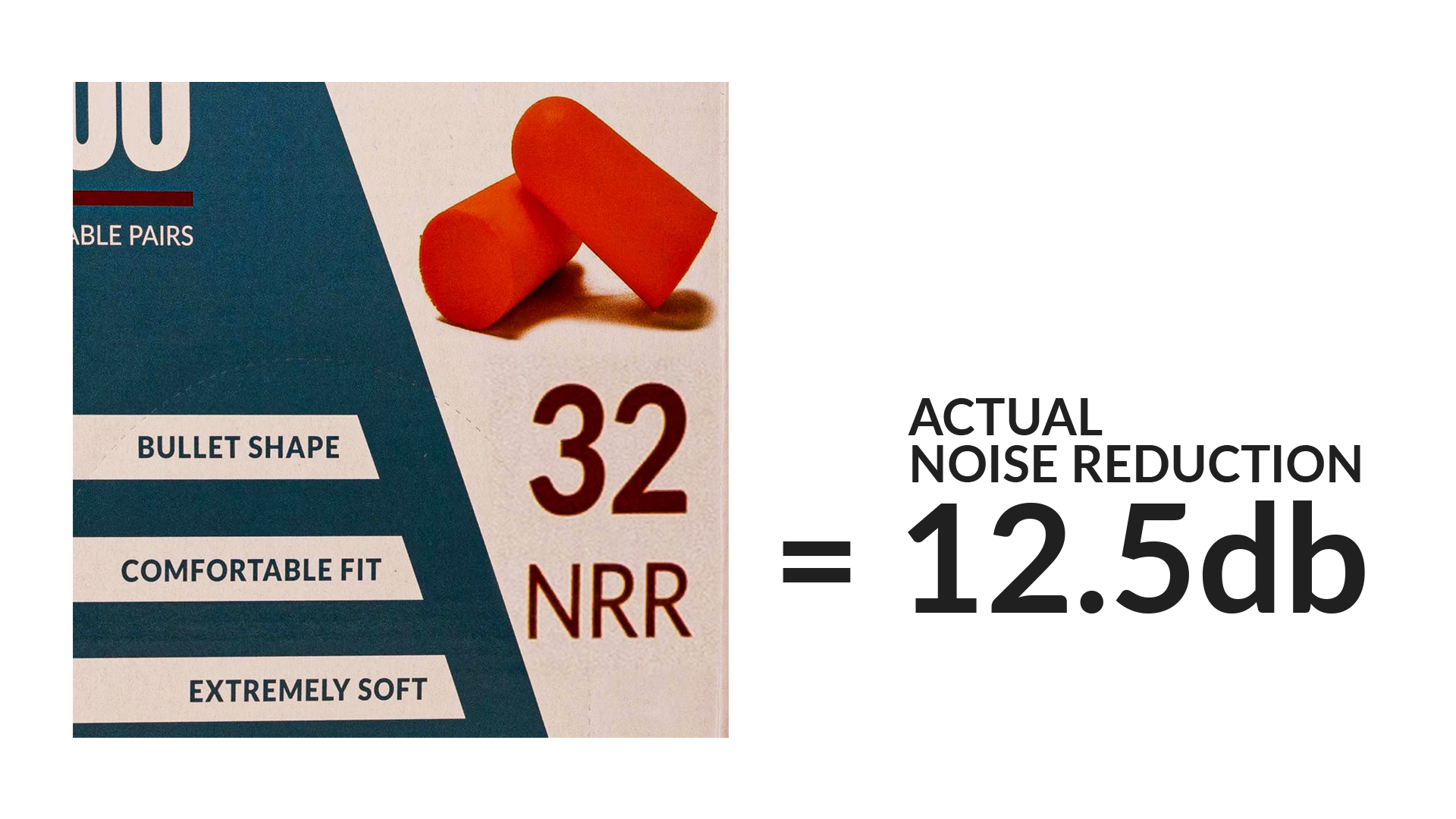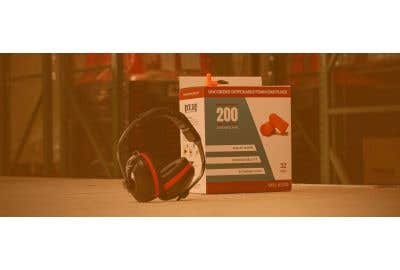*Disclaimer*
The information contained on this page is for promotional and informational purposes only. All equipment should be used by trained professional tradesmen who have been trained how to use the equipment described on this page, and understand the risks of their work. PowerPak assumes no responsibility for errors or omissions in the use or misuse of any product purchased. In no event shall PowerPak be liable for any direct, special, indirect, consequential, or incidental damages or any damages whatsoever, whether in an action of contract, negligence or other torts, arising out of or in connection with the use of this information or the contents of this page. PowerPak reserves the right to make additions, deletions, or modifications to the contents on this page at any time without prior notice.
Workplace hearing protection all comes down to one primary goal, keep your daily average exposure under 85db (decibels). How loud is 85db? As a rule of thumb, if you need to shout to talk to someone an arm's length away, you are above 85db.
That’s the goal, now let’s get into how that is measured.
Initial Assessment
Before buying and wearing hearing protection on the jobsite, you first need to assess the amount of hearing protection required, but before that, you need to determine if hearing protection is the correct route.
First, you need to determine if your workplace has a noise issue. Doing this can be as simple as acknowledging that it's too loud. It's too loud if you must raise your voice to talk or your hearing is affected after leaving work.
Next, you need to specify the noise issue. Is the noise all coming from one machine or space, or is it a generally loud environment, like a high-traffic highway? If the noise comes from a specific source, workers closer to the source will require higher protection than individuals who primarily work away from the source.
Forcing workers to wear unnecessarily high noise reduction PPE is uncomfortable, dangerous, and expensive. Creating zones benefits everyone.
Hearing protection is a last resort for protecting workers' hearing. This initial assessment is important because it allows you the opportunity to determine if there is a mechanical solution. If machinery is operating abnormally loud, it may require repair, or other options/fixes should be explored. If you cannot reduce noise levels, you should start using hearing protection.
Measuring the Sound Level of Your Environment


Measuring the Sound Level of Your Environment
If you find yourself in a situation where you can't reduce the noise level, it's time to start measuring. There are many ways to measure sound. We will explore the two main measurement tools; sound level meter (SLM) and noise dosimeter.
Sound Level Meter is a popular option. This handheld device can give you a noise level reading in decibels(dB). SLMs are rated in a class system. For these purposes, you want a Class 2 SLM. Class 1 SLMs are for scientific measurements.
You can carry an SLM around, and it will give you a live db reading. If the space is consistently loud, you can make a visual assessment. For example, if the reading bounces between 90db 100db, you can safely move forward with the appropriate PPE for 100db. We will dive more into calculating the appropriate PPE later.
Keeping track of the highest reading can be difficult if the noise level jumps all over the place. This Extech meter has a max hold option. With max hold enabled, the meter will only update the display with higher readings, making it easy to establish the highest noise level.
Some digital SLMs have a data logging option. You can set the SLM to record at a specific interval, and it will log the meter readouts, and you can upload those logs and chart them out. This feature will give you a much more accurate assessment, especially in a workplace with variable sound issues.
Another great option is to use a noise dosimeter. Noise dosimeters are lightweight monitors that have a shoulder-clipped mic. The dosimeter collects noise data while the worker goes about their typical day, and the data can be downloaded and evaluated later. This meter is an excellent option if you want to have accurate data of the noise level workers are exposed to throughout the day. This data can be used to make mechanical corrections where needed and provide the appropriate PPE.
If you have more immediate short-term needs, like attending/working a concert or temporarily working with a loud power tool, you can use a comparative chart. Plenty of charts online can give you an idea of what noise levels sound like, such as operating a blender between 90db and 100db or a police siren measures about 120db. These charts are not an accurate measurement method, but it is a useful option when you need an answer fast, and it is better than doing nothing.
Choosing The Correct NRR (Noise Reduction Rating) For Your Needs
Again, it’s important to remember that the goal is to keep your average daily noise exposure below 85db.
It sounds simple, but there are a lot of factors that can lead you in the wrong direction.
Let’s say trying to figure out the proper hearing protection for workers in a manufacturing facility. You've conducted a series of noise dosimeter and SLM tests, and you've concluded the average noise level exposure is 100db.
Workers will need to use hearing protection that reduces their average noise exposure by 15db. Unfortunately, you can’t just pick up some earmuffs with an NRR (noise reduction rating) of 15db and call it a day.
The advertised NRR on hearing protection is not what you will experience in use. Hearing protection is tested and rated in a lab with uniform lab conditions. Real-world factors significantly reduce the effectiveness. In the manufacturing facility example, the workers are also wearing safety glasses; the safety glasses break the seal of the earmuffs, which significantly reduces how much noise the earmuffs can block. Earplugs have their own set of limitations, such as improper use and people having different size and shaped ear canals. Countless real-world factors limit the effectiveness of hearing protection.
Also, the lab tests are conducted on a different sound scale than the tests we perform with our meters. Our sound level meters measure db(a) while the NRR measures db(c). The difference is db(a) is A scale, and it measures similar frequencies that we can hear with our ears. C scale, db(c), measures a broader spectrum of frequencies uniformly.
Per OSHA, to account for the scale change, you need to subtract 7db from the listed NRR db value on the packaging. On top of that, you can safely assume that your hearing protection will work about half as good as it says it will. So, after subtracting 7db, you need to divide by 2.
Here is the equation:
To convert the "NRR db" value to the "actual db value needed".
We will calculate in reverse since we know the db reduction value we need.
(Actual db Value Needed x 2) +7db
In the manufacturing facility example, the noise level is 100db. Workers need a 15db reduction to get to 85db.
15db x 2 = 30db
30db+7db = 37db
They will need hearing protection with an NRR of 37db.


Dual Protection
Finding cost-effective high decibel hearing protection is a difficult task. One option you can explore is dual protection, using earplugs and earmuffs together.
Again, it’s not as simple as it sounds. The misconception is that you add the NRR dB values listed on the earmuffs packaging and earplugs packaging, and you are set, but that number would be way too high.
To determine the reduction value when using earmuffs and earplugs, you add 5db from the higher NRR. Yes, just 5db.
Using the manufacturing facility worker's example again. We established that these workers need 37db noise reduction. The workers could wear NRR 32db earplugs and NRR 22db Earmuffs (or any ear muffs). Together these two hearing protectors provide 37db noise reduction.
NRR 32db + 5db = 37db.
Don't Be Intimidated
Everything we've covered seems complicated, but it's not. When you go through this process one step at a time, you'll see the conversions and math are simple. Looking at the numbers and equations in this article may be enough to deter someone from doing this correctly.
Don't just buy any random earplugs and call it a day. Not wearing enough hearing protection will cause long-term damage, and wearing too much hearing protection unnecessarily puts workers at risk.
Correctly assessing and implementing your hearing protection needs will only take a couple of hours of work to avoid years of hearing loss issues.
If you have any questions, PowerPak has an excellent customer support team and can be contacted here.


